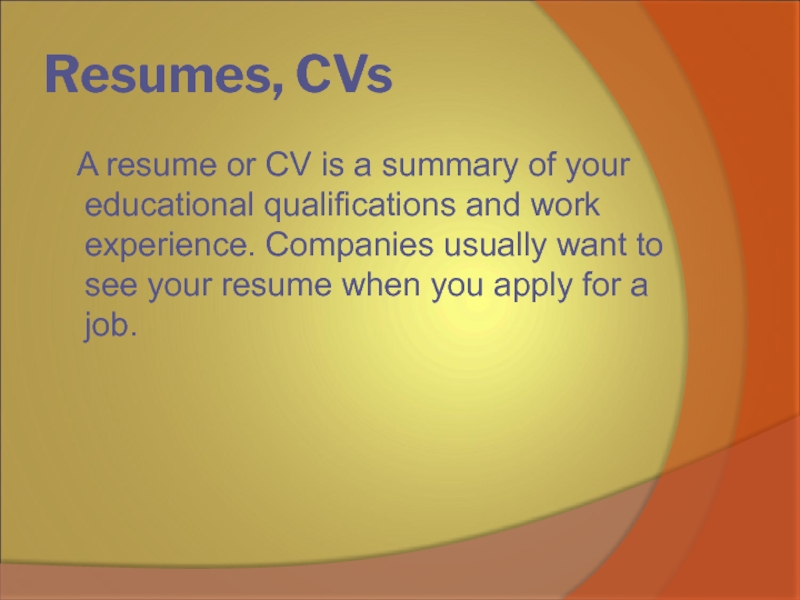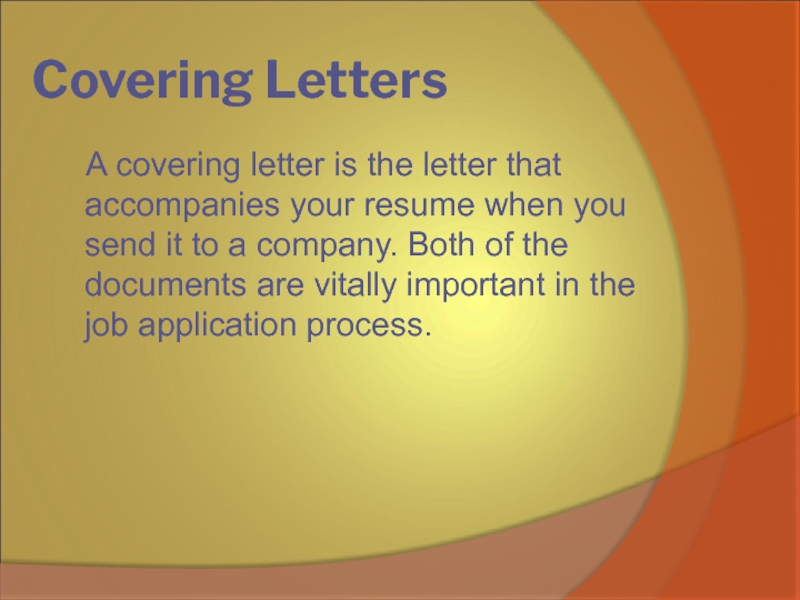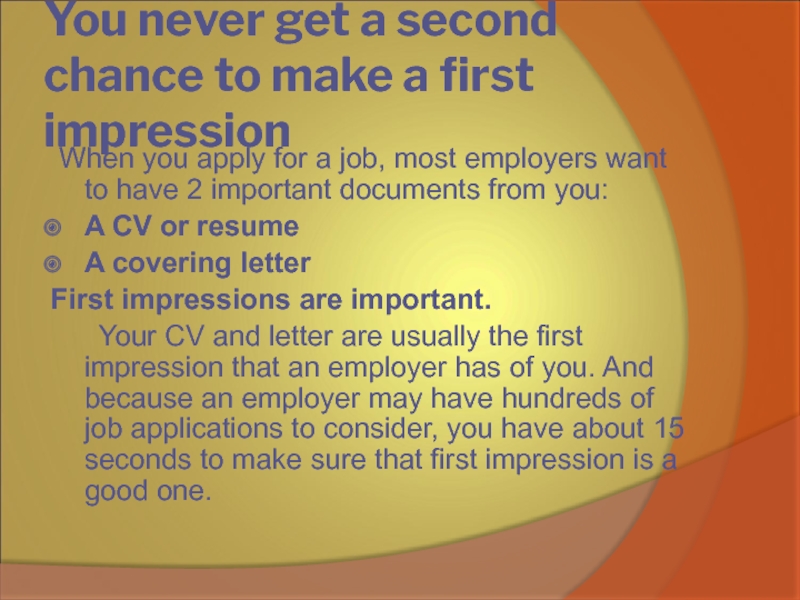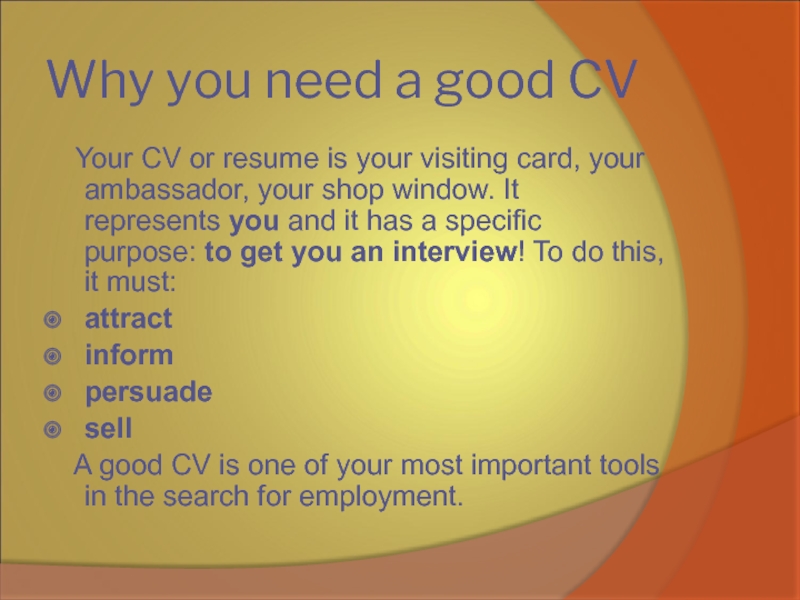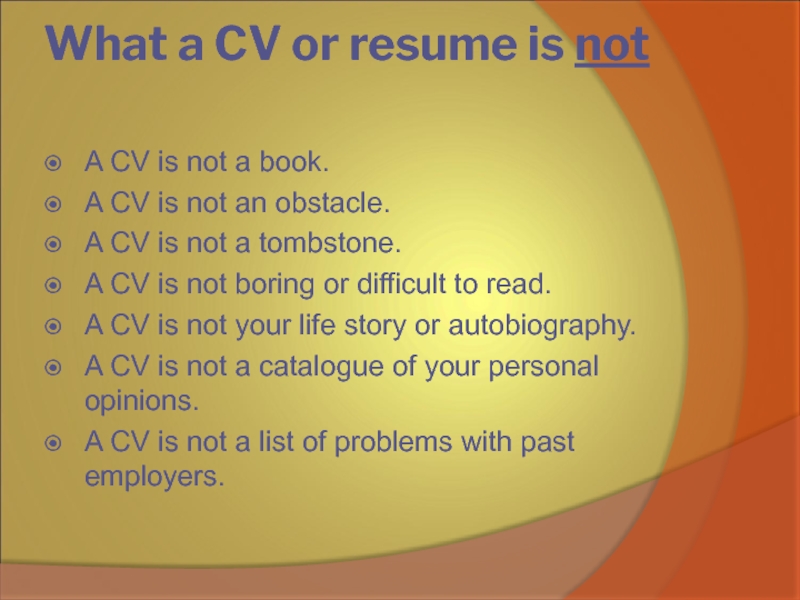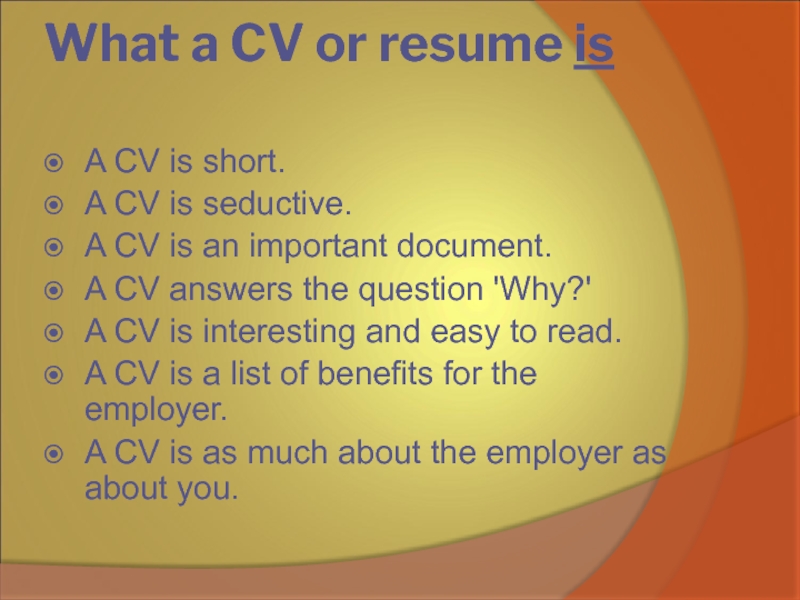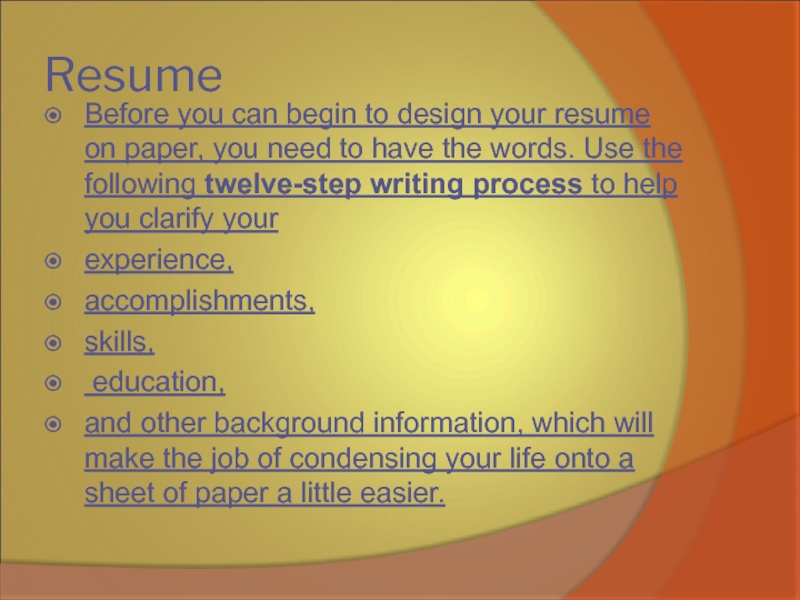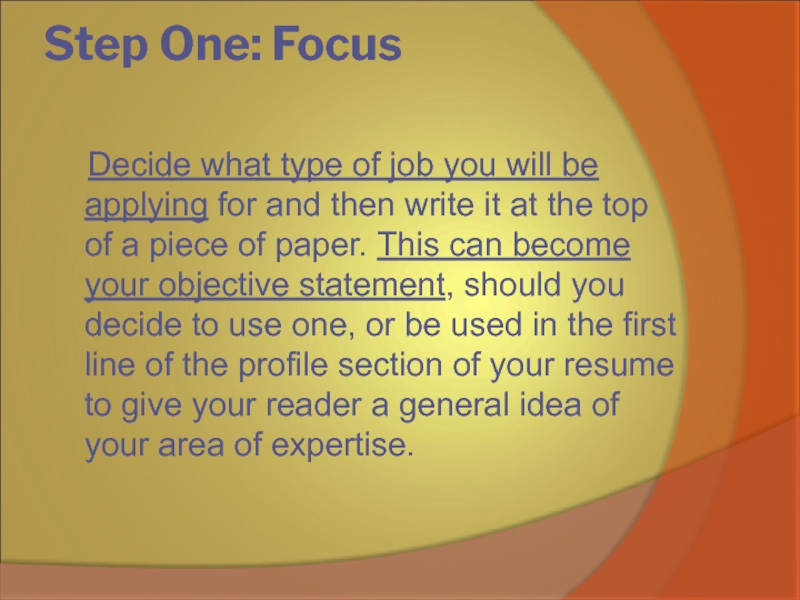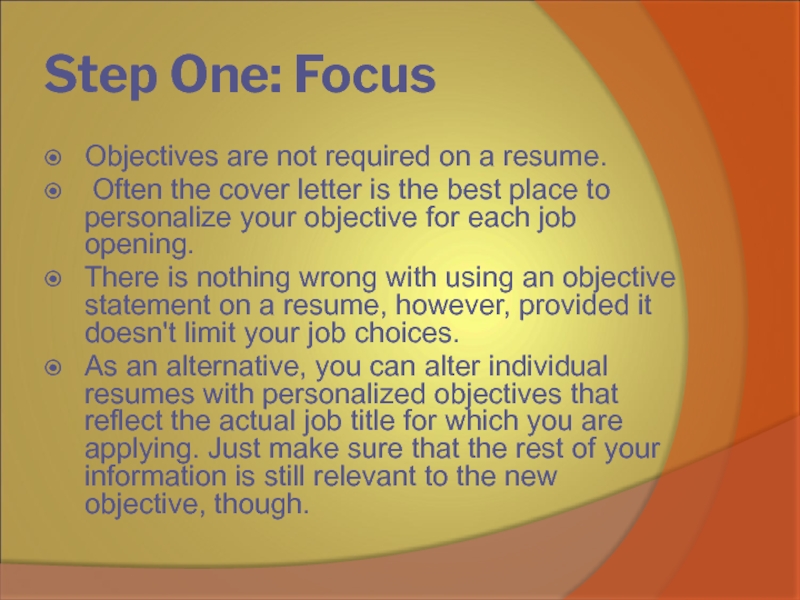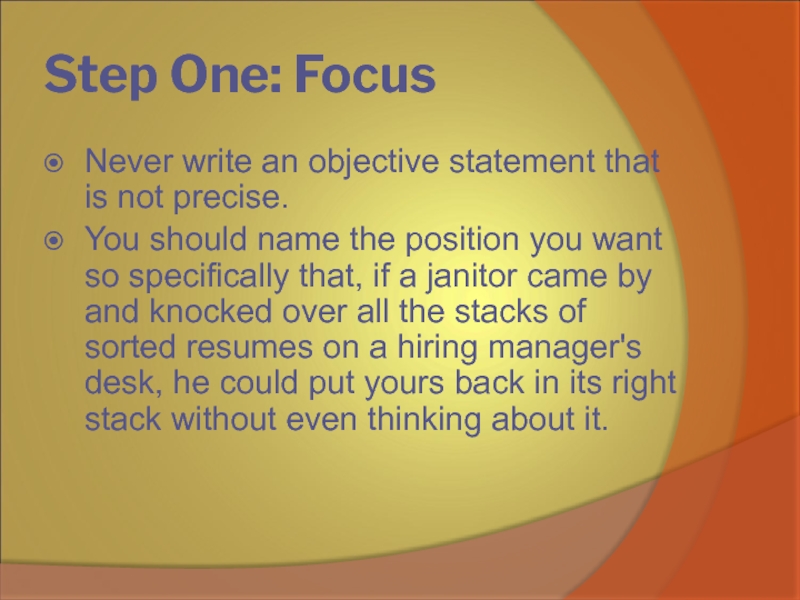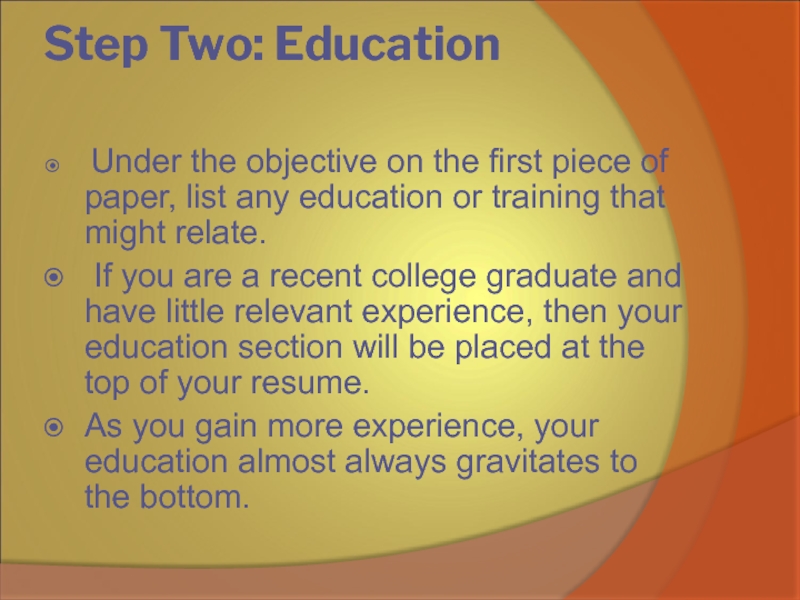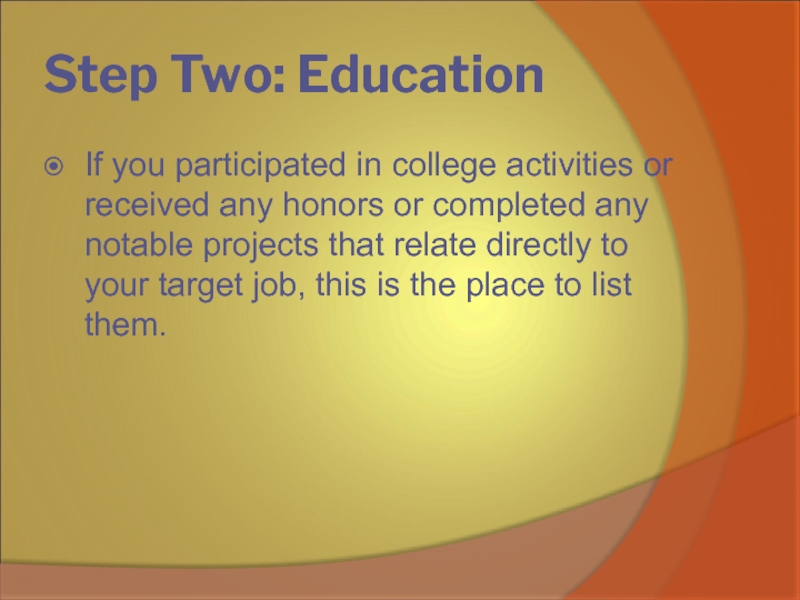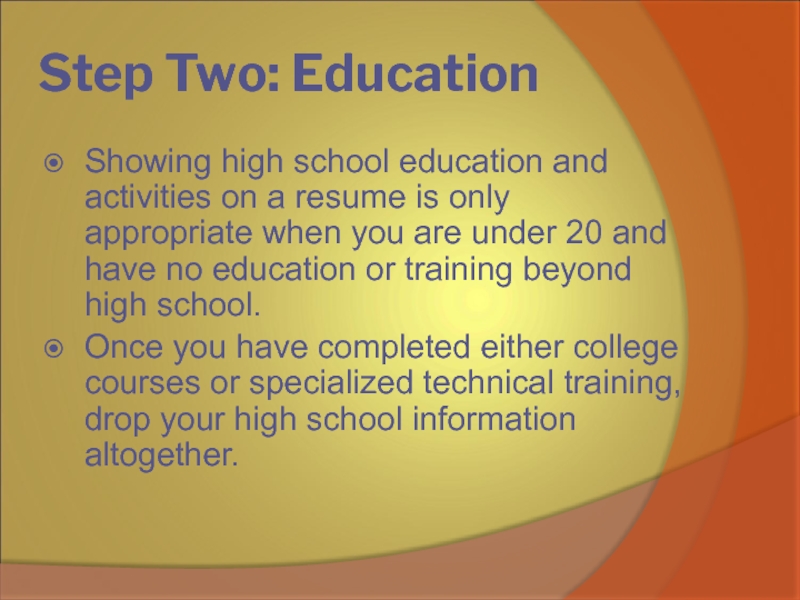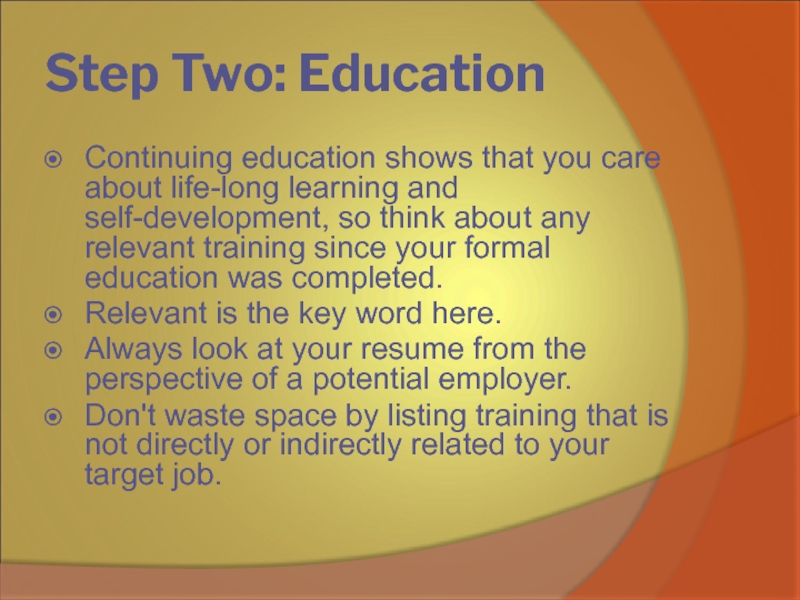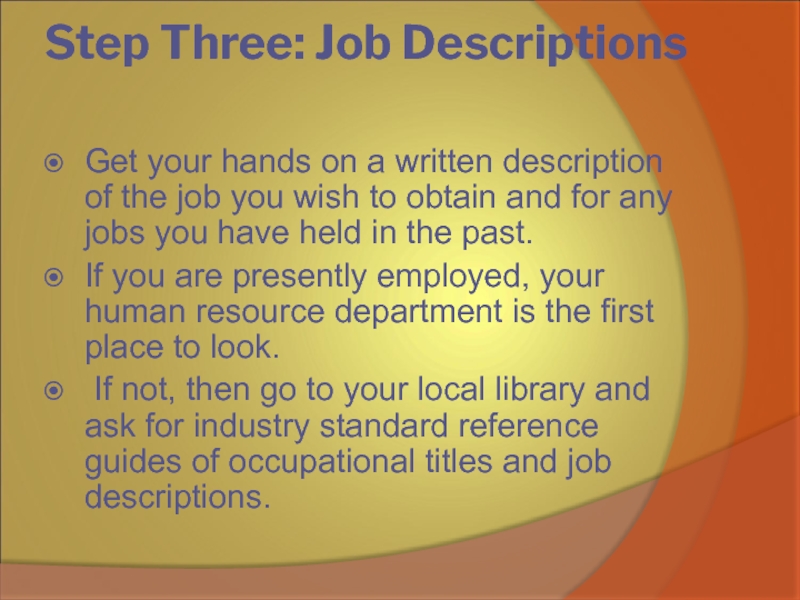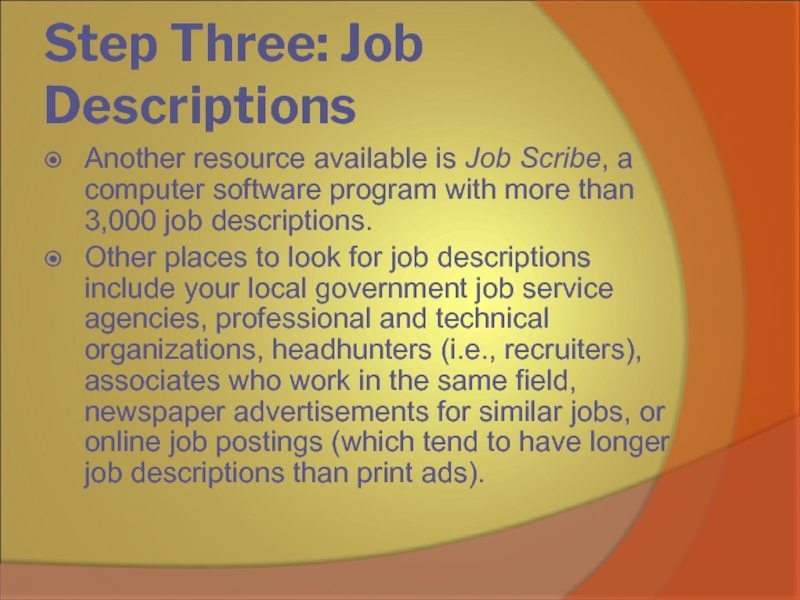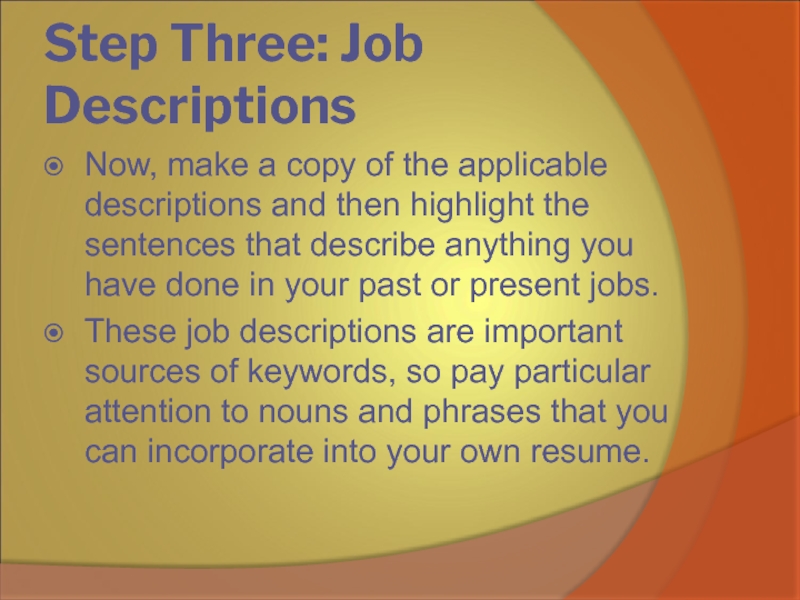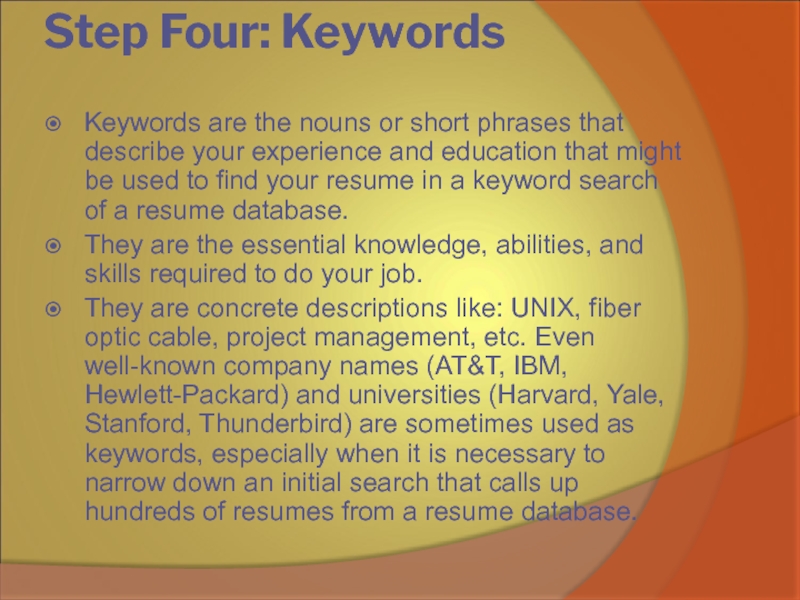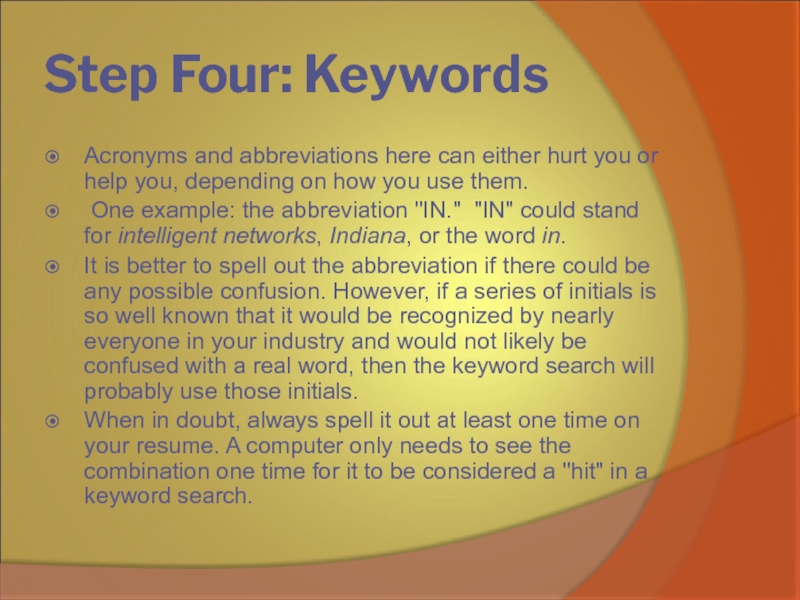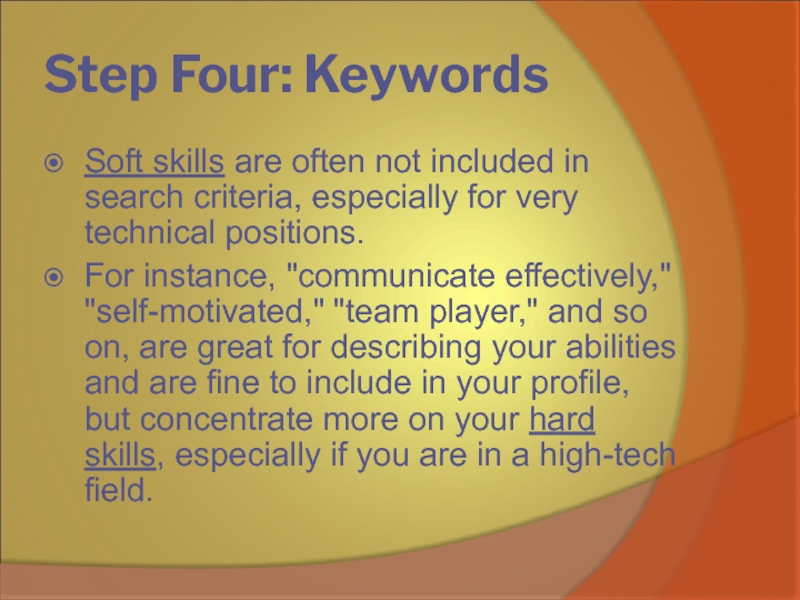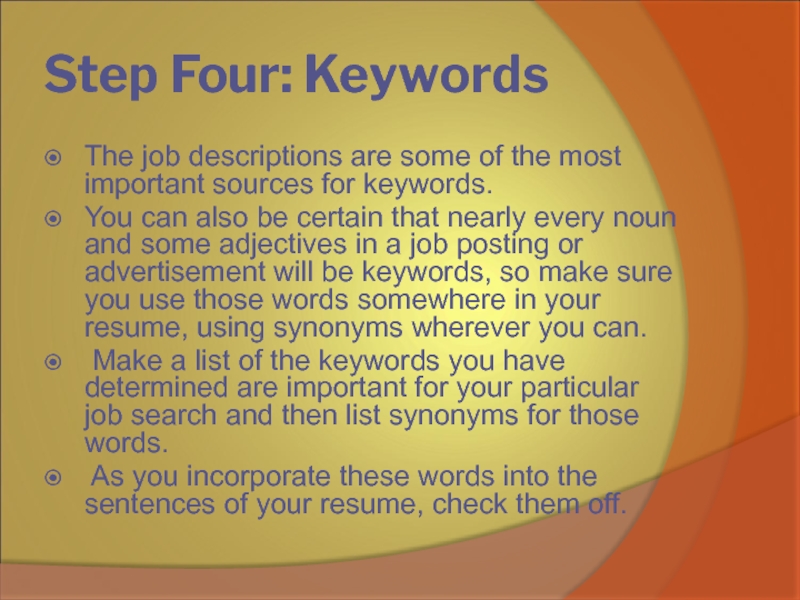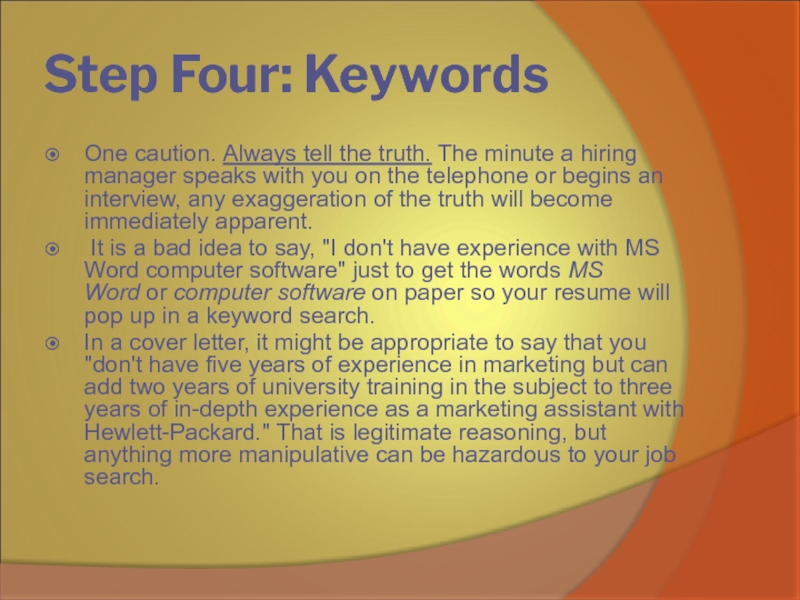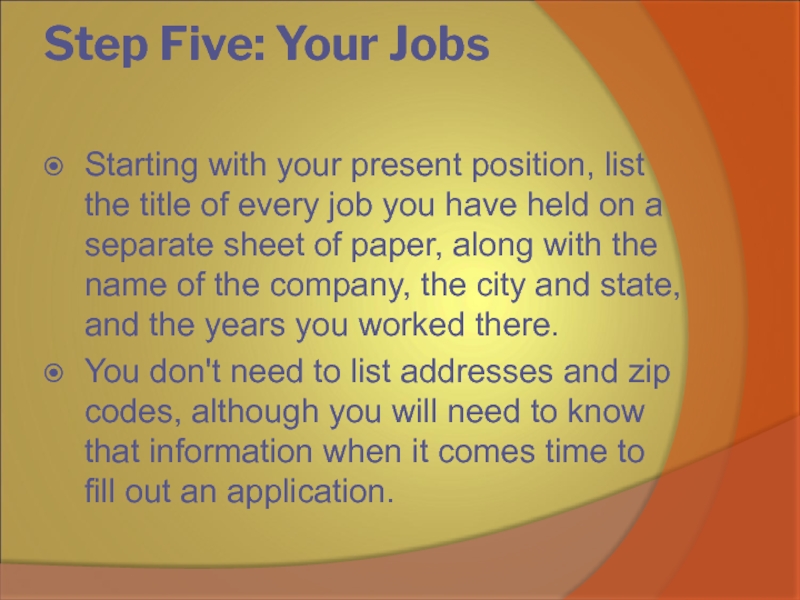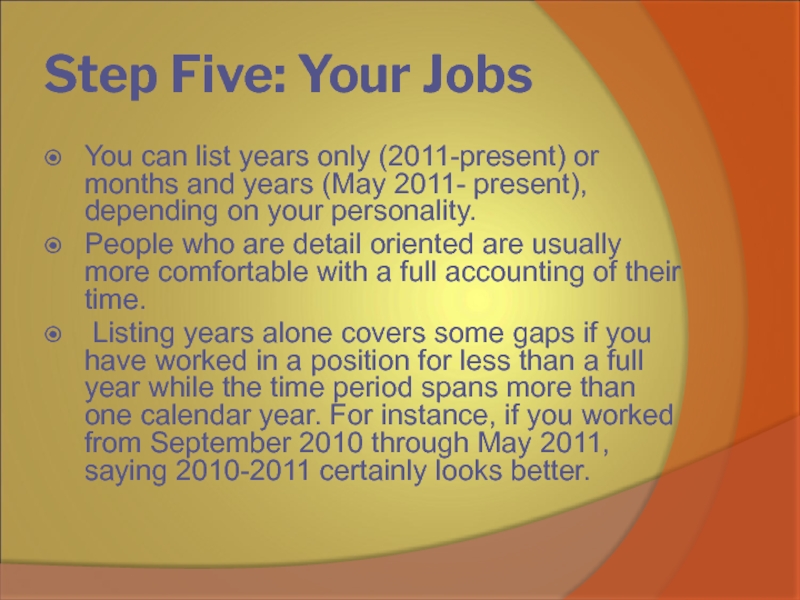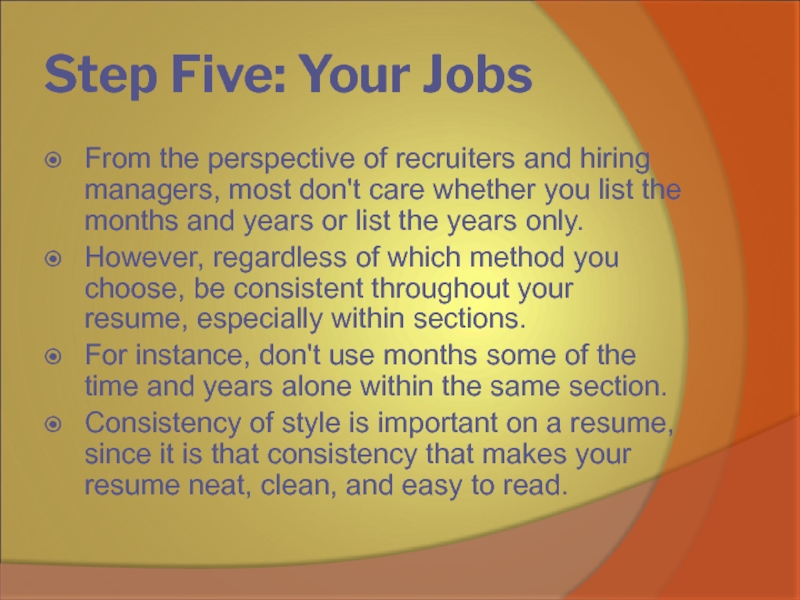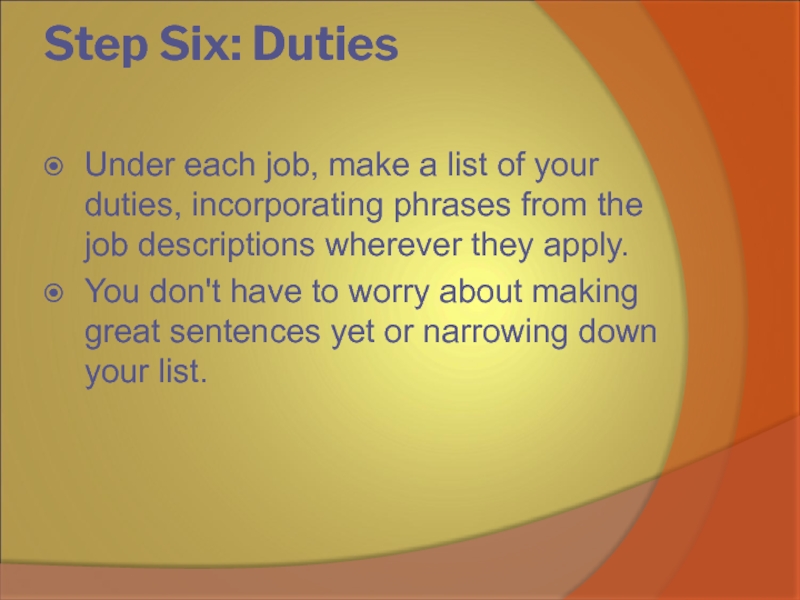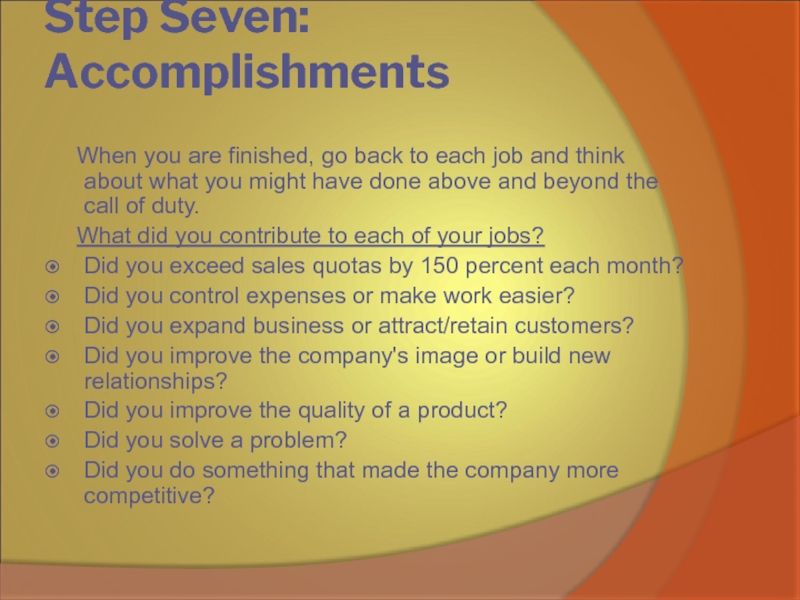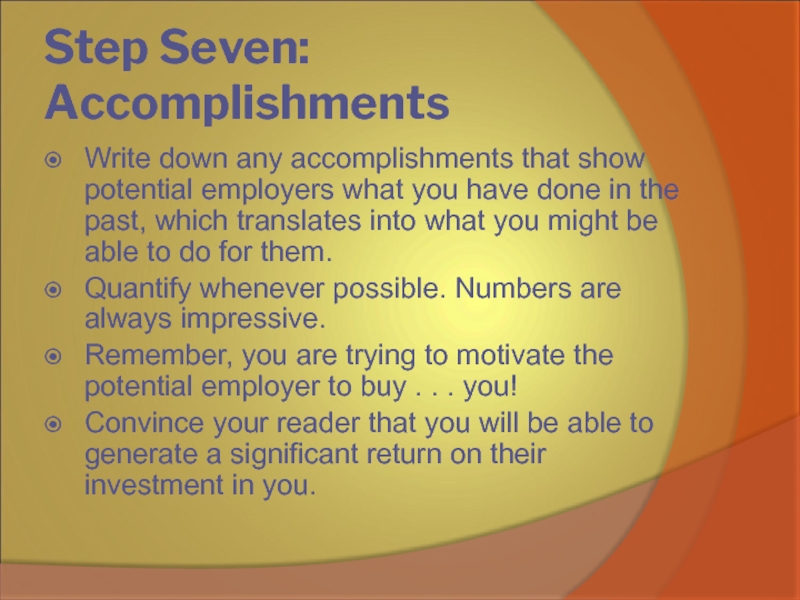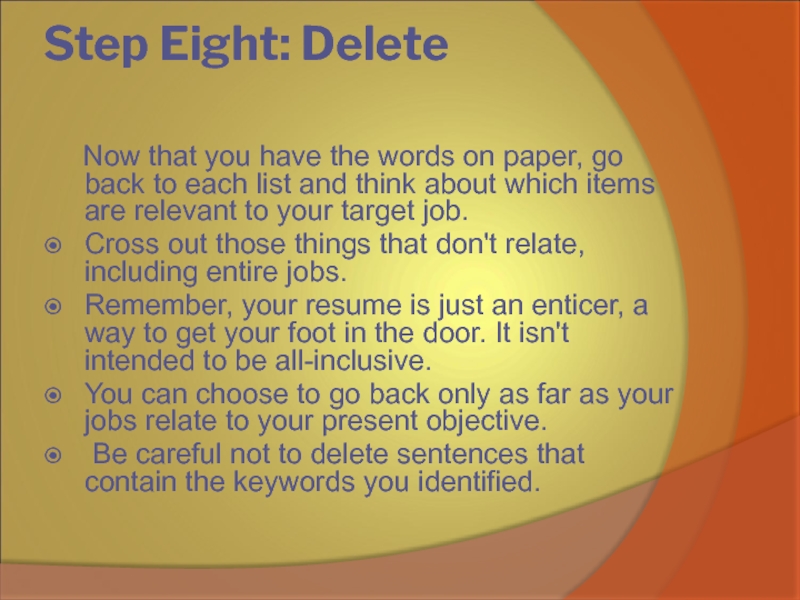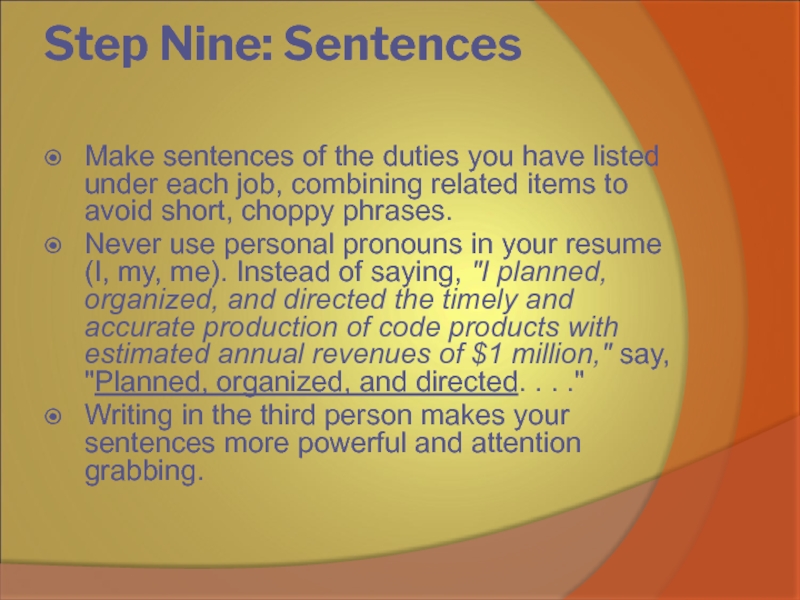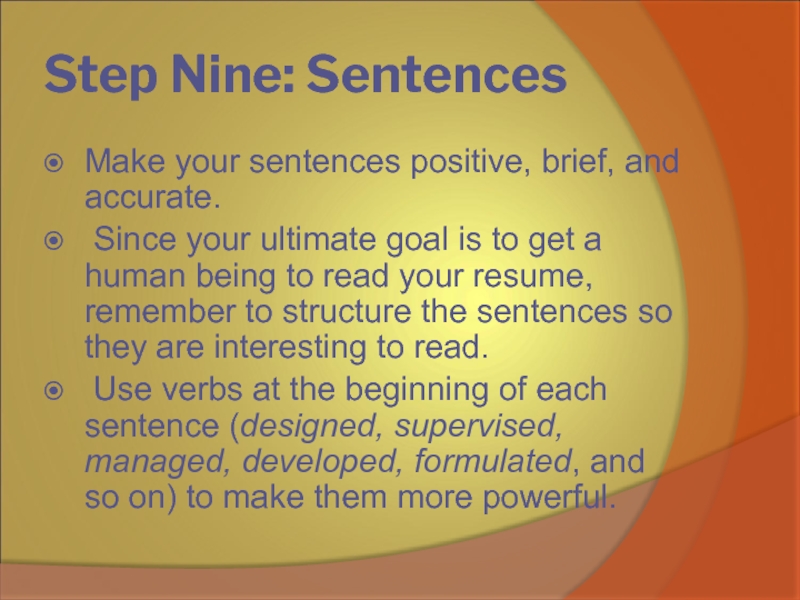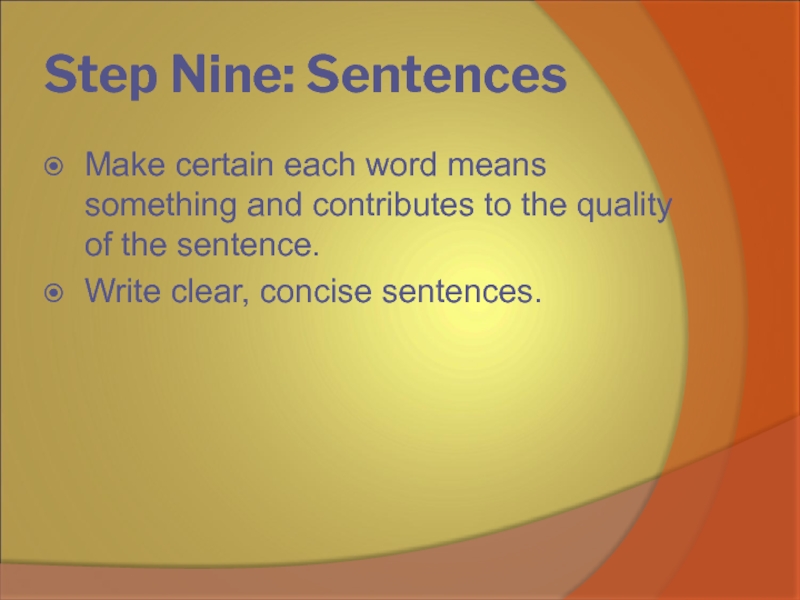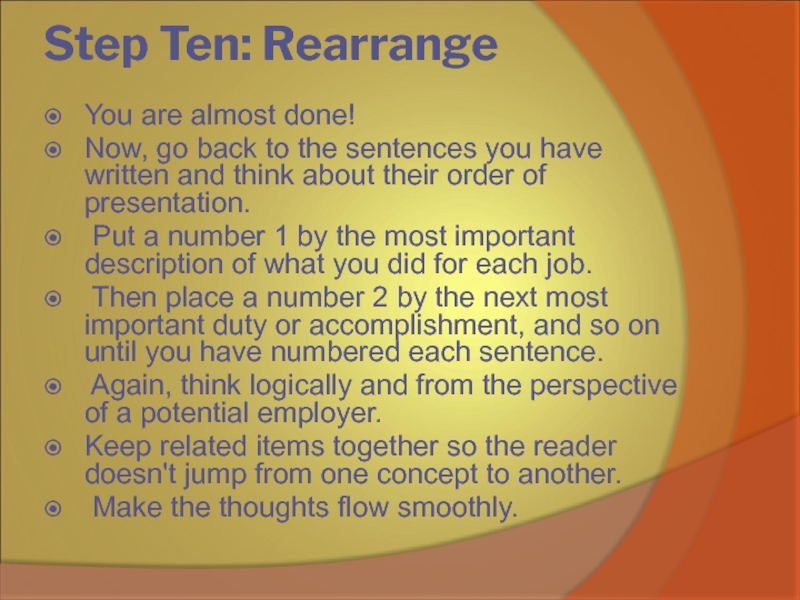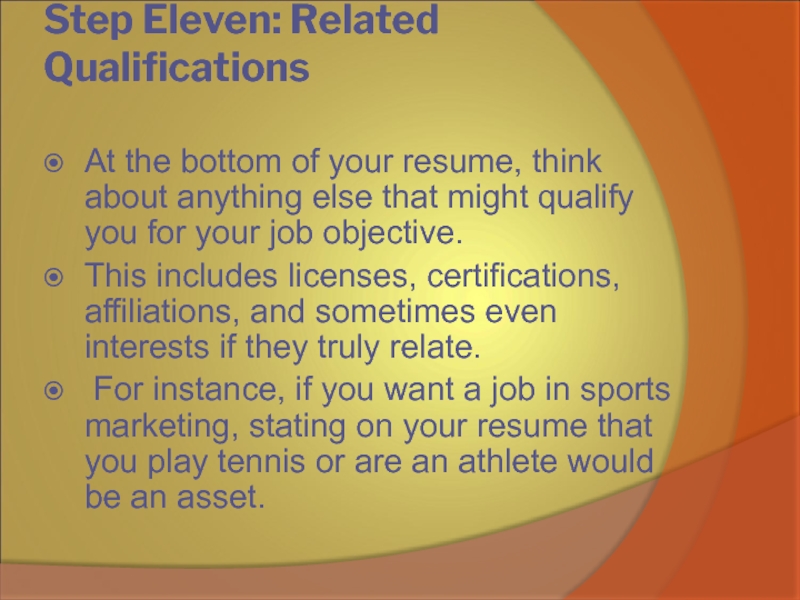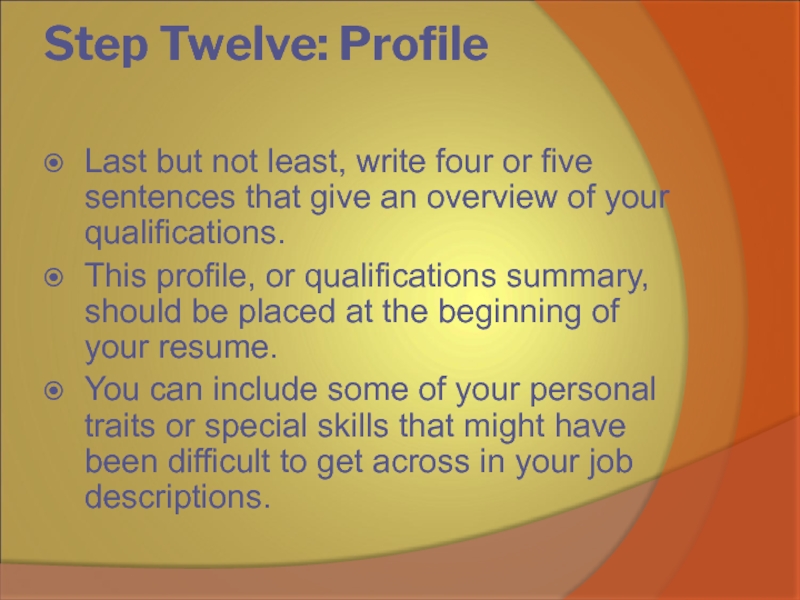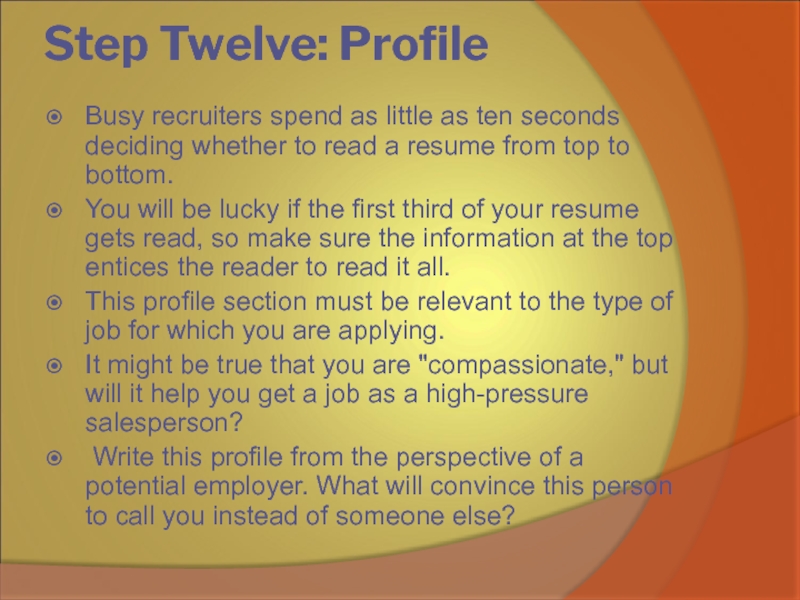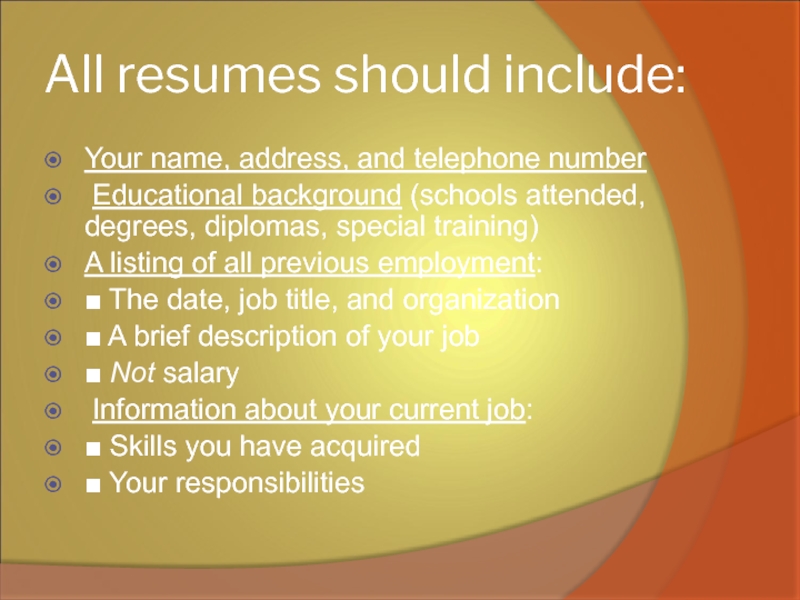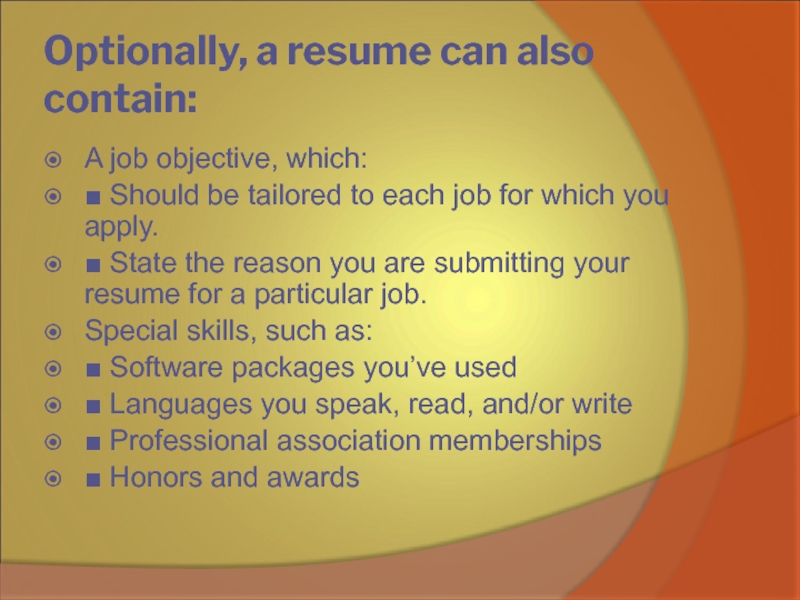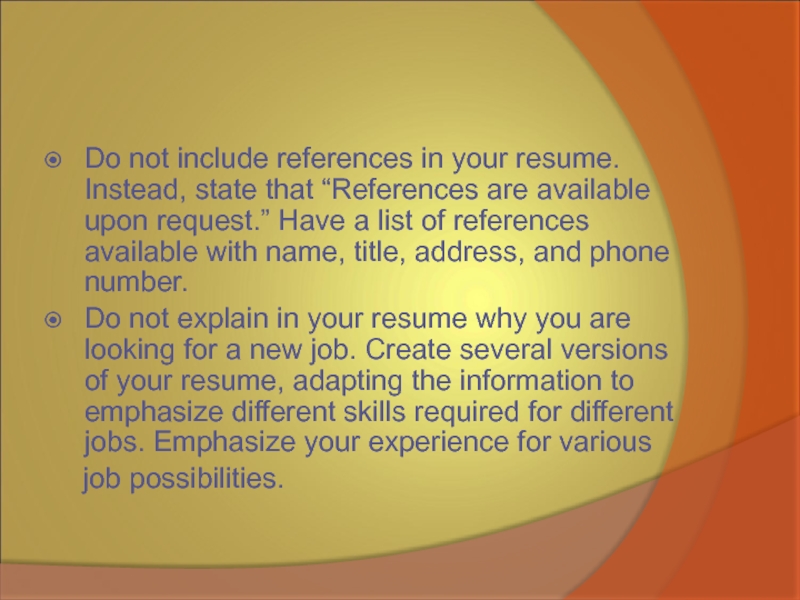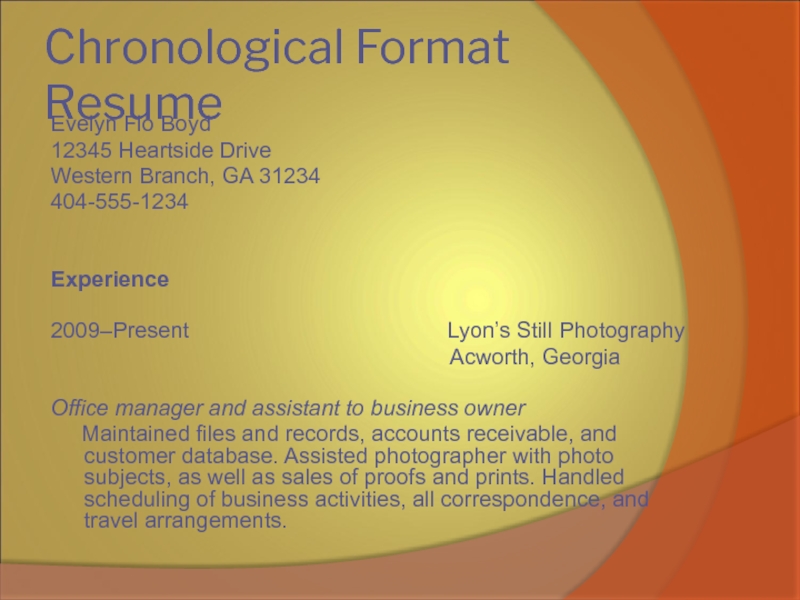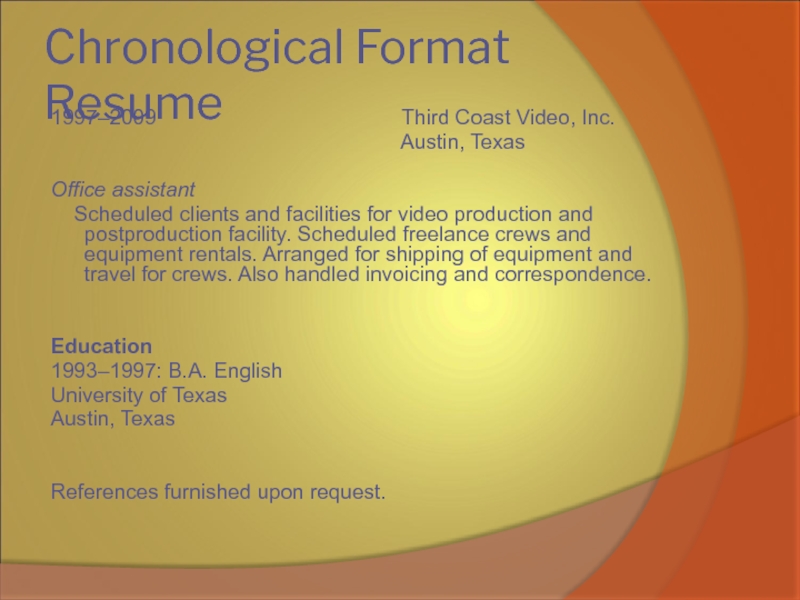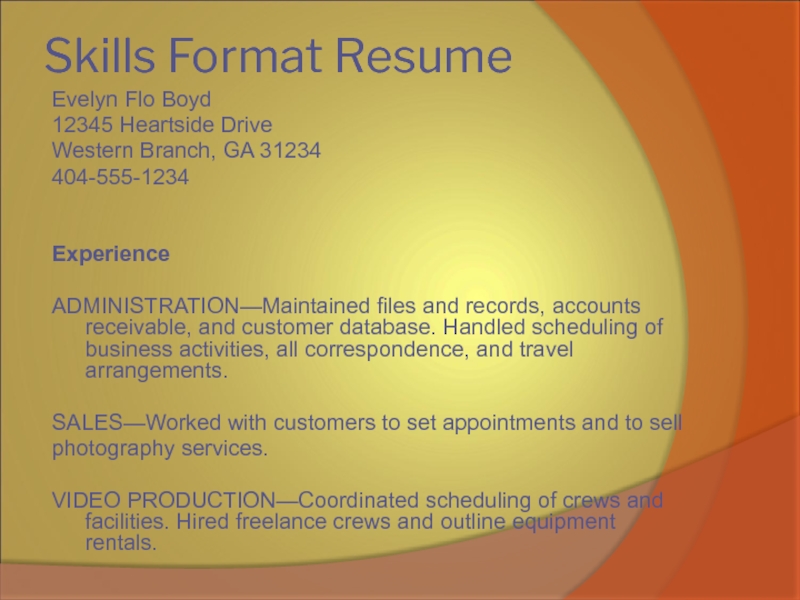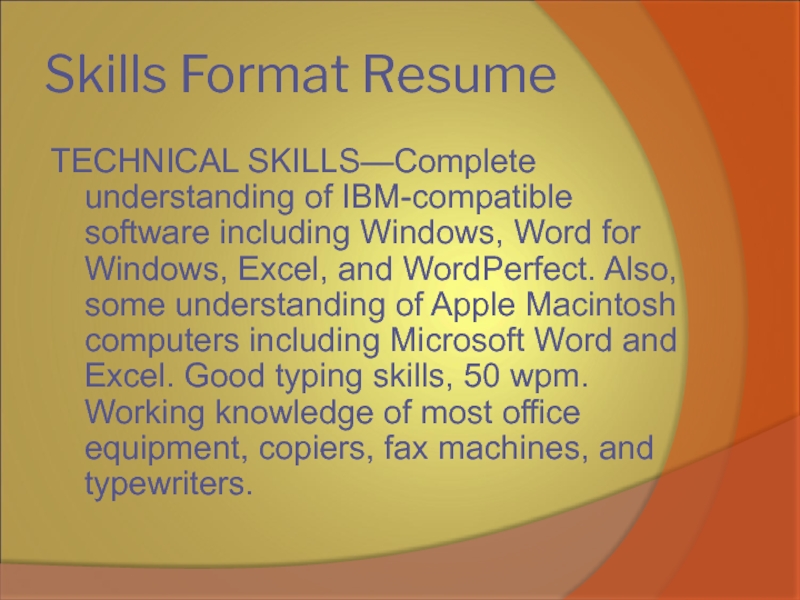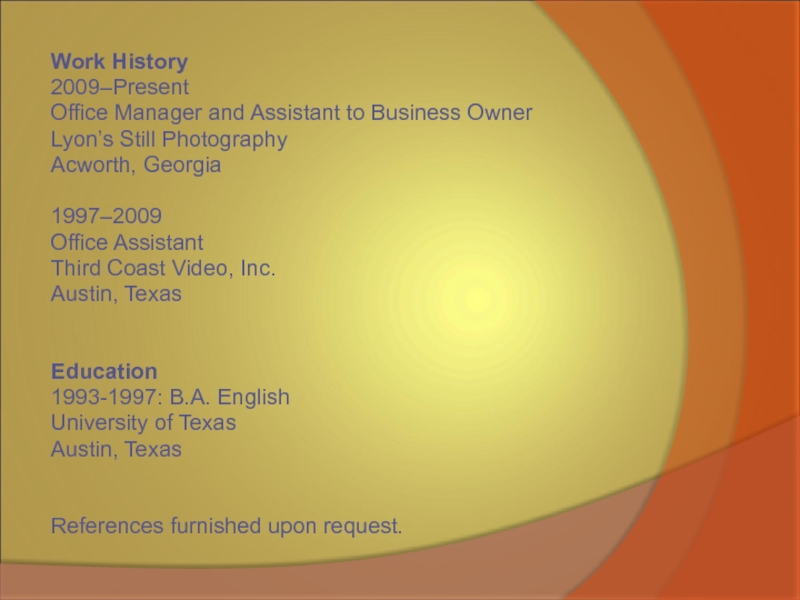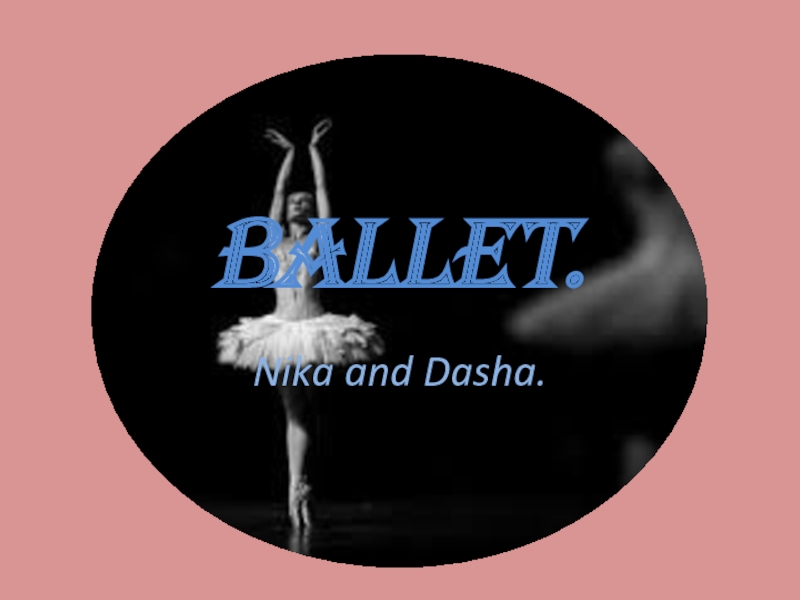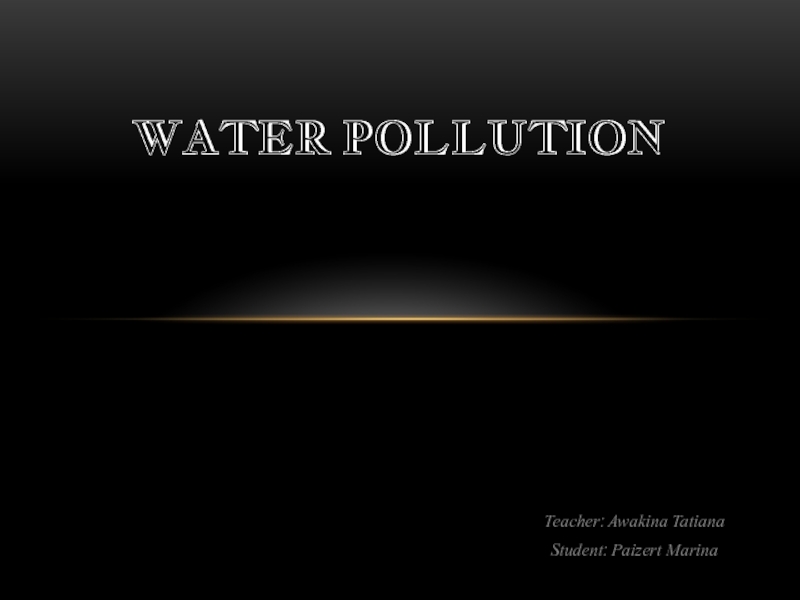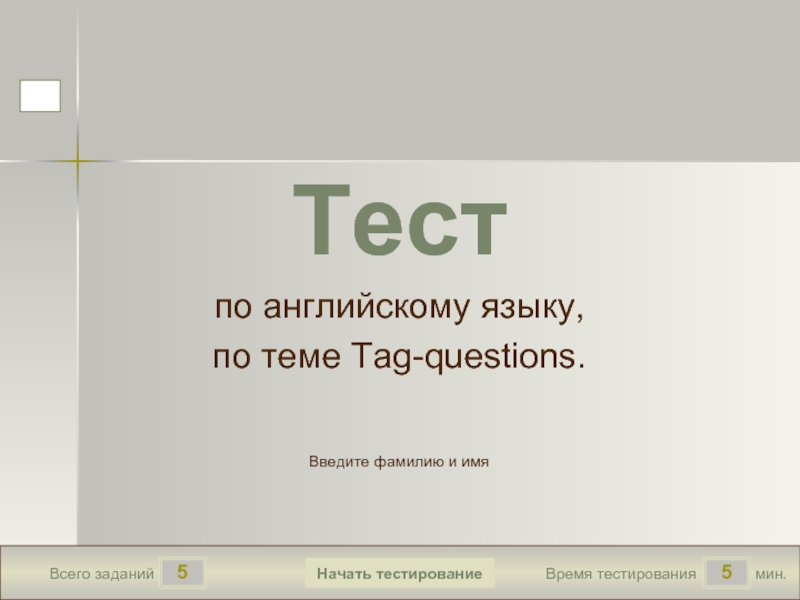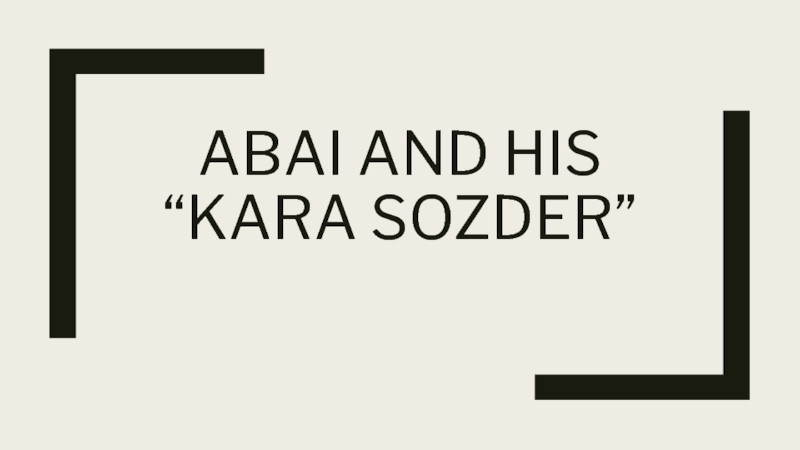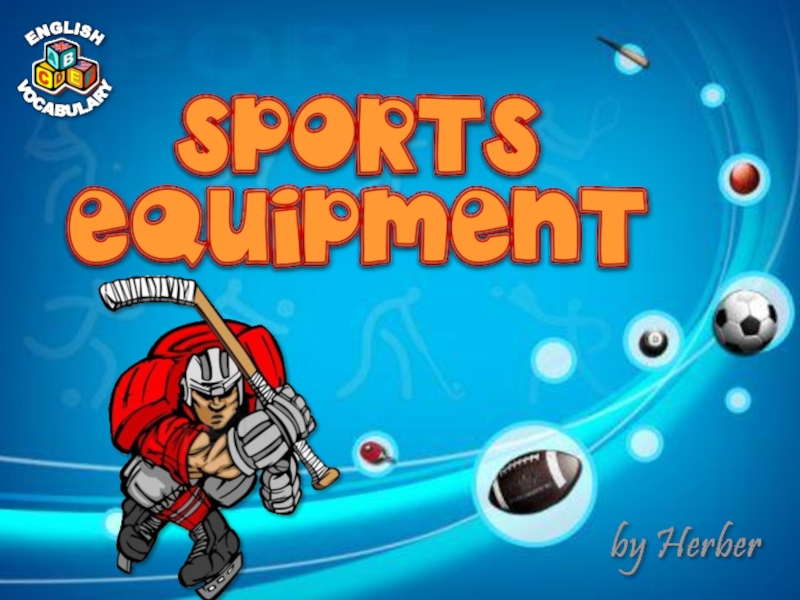- Главная
- Разное
- Дизайн
- Бизнес и предпринимательство
- Аналитика
- Образование
- Развлечения
- Красота и здоровье
- Финансы
- Государство
- Путешествия
- Спорт
- Недвижимость
- Армия
- Графика
- Культурология
- Еда и кулинария
- Лингвистика
- Английский язык
- Астрономия
- Алгебра
- Биология
- География
- Детские презентации
- Информатика
- История
- Литература
- Маркетинг
- Математика
- Медицина
- Менеджмент
- Музыка
- МХК
- Немецкий язык
- ОБЖ
- Обществознание
- Окружающий мир
- Педагогика
- Русский язык
- Технология
- Физика
- Философия
- Химия
- Шаблоны, картинки для презентаций
- Экология
- Экономика
- Юриспруденция
Resumes, CVs and Covering Letters in English презентация
Содержание
- 1. Resumes, CVs and Covering Letters in English
- 2. Resumes, CVs A resume
- 3. Covering Letters A covering
- 4. You never get a second chance to
- 5. Why you need a good CV
- 6. What a CV or resume is not
- 7. What a CV or resume is A
- 8. Resume Before you can begin to
- 9. Step One: Focus Decide
- 10. Step One: Focus Objectives are not required
- 11. Step One: Focus Never write an objective
- 12. Step Two: Education Under the
- 13. Step Two: Education If you participated in
- 14. Step Two: Education Showing high school education
- 15. Step Two: Education Continuing education shows that
- 16. Step Three: Job Descriptions Get your
- 17. Step Three: Job Descriptions Another resource available
- 18. Step Three: Job Descriptions Now, make a
- 19. Step Four: Keywords Keywords are the
- 20. Step Four: Keywords Acronyms and abbreviations here
- 21. Step Four: Keywords Soft skills are often
- 22. Step Four: Keywords The job descriptions are
- 23. Step Four: Keywords One caution. Always tell
- 24. Step Five: Your Jobs Starting with
- 25. Step Five: Your Jobs You can list
- 26. Step Five: Your Jobs From the perspective
- 27. Step Six: Duties Under each job,
- 28. Step Seven: Accomplishments When
- 29. Step Seven: Accomplishments Write down any accomplishments
- 30. Step Eight: Delete Now
- 31. Step Nine: Sentences Make sentences of
- 32. Step Nine: Sentences Make your sentences positive,
- 33. Step Nine: Sentences Make certain each word
- 34. Step Ten: Rearrange You are almost
- 35. Step Eleven: Related Qualifications At the
- 36. Step Twelve: Profile Last but not
- 37. Step Twelve: Profile Busy recruiters spend
- 38. All resumes should include: Your name, address,
- 39. Optionally, a resume can also contain: A
- 40. Do not include references in your resume.
- 41. Chronological Format Resume Evelyn Flo Boyd 12345
- 42. Chronological Format Resume 1997–2009
- 43. Skills Format Resume Evelyn Flo Boyd 12345
- 44. Skills Format Resume TECHNICAL SKILLS—Complete understanding of
- 45. Work History 2009–Present Office Manager and Assistant
Слайд 2Resumes, CVs
A resume or CV is a summary
Слайд 3Covering Letters
A covering letter is the letter that
Слайд 4You never get a second chance to make a first impression
When you apply for a job, most employers want to have 2 important documents from you:
A CV or resume
A covering letter
First impressions are important.
Your CV and letter are usually the first impression that an employer has of you. And because an employer may have hundreds of job applications to consider, you have about 15 seconds to make sure that first impression is a good one.
Слайд 5Why you need a good CV
Your CV or
attract
inform
persuade
sell
A good CV is one of your most important tools in the search for employment.
Слайд 6What a CV or resume is not
A CV is not a book.
A
A CV is not a tombstone.
A CV is not boring or difficult to read.
A CV is not your life story or autobiography.
A CV is not a catalogue of your personal opinions.
A CV is not a list of problems with past employers.
Слайд 7What a CV or resume is
A CV is short.
A CV is seductive.
A
A CV answers the question 'Why?'
A CV is interesting and easy to read.
A CV is a list of benefits for the employer.
A CV is as much about the employer as about you.
Слайд 8Resume
Before you can begin to design your resume on paper,
experience,
accomplishments,
skills,
education,
and other background information, which will make the job of condensing your life onto a sheet of paper a little easier.
Слайд 9Step One: Focus
Decide what type of job you will
Слайд 10Step One: Focus
Objectives are not required on a resume.
Often the
There is nothing wrong with using an objective statement on a resume, however, provided it doesn't limit your job choices.
As an alternative, you can alter individual resumes with personalized objectives that reflect the actual job title for which you are applying. Just make sure that the rest of your information is still relevant to the new objective, though.
Слайд 11Step One: Focus
Never write an objective statement that is not precise.
You should name the position you want so specifically that, if a janitor came by and knocked over all the stacks of sorted resumes on a hiring manager's desk, he could put yours back in its right stack without even thinking about it.
Слайд 12Step Two: Education
Under the objective on the first piece of
If you are a recent college graduate and have little relevant experience, then your education section will be placed at the top of your resume.
As you gain more experience, your education almost always gravitates to the bottom.
Слайд 13Step Two: Education
If you participated in college activities or received any
Слайд 14Step Two: Education
Showing high school education and activities on a resume
Once you have completed either college courses or specialized technical training, drop your high school information altogether.
Слайд 15Step Two: Education
Continuing education shows that you care about life-long learning
Relevant is the key word here.
Always look at your resume from the perspective of a potential employer.
Don't waste space by listing training that is not directly or indirectly related to your target job.
Слайд 16Step Three: Job Descriptions
Get your hands on a written description of
If you are presently employed, your human resource department is the first place to look.
If not, then go to your local library and ask for industry standard reference guides of occupational titles and job descriptions.
Слайд 17Step Three: Job Descriptions
Another resource available is Job Scribe, a computer software
Other places to look for job descriptions include your local government job service agencies, professional and technical organizations, headhunters (i.e., recruiters), associates who work in the same field, newspaper advertisements for similar jobs, or online job postings (which tend to have longer job descriptions than print ads).
Слайд 18Step Three: Job Descriptions
Now, make a copy of the applicable descriptions
These job descriptions are important sources of keywords, so pay particular attention to nouns and phrases that you can incorporate into your own resume.
Слайд 19Step Four: Keywords
Keywords are the nouns or short phrases that describe
They are the essential knowledge, abilities, and skills required to do your job.
They are concrete descriptions like: UNIX, fiber optic cable, project management, etc. Even well-known company names (AT&T, IBM, Hewlett-Packard) and universities (Harvard, Yale, Stanford, Thunderbird) are sometimes used as keywords, especially when it is necessary to narrow down an initial search that calls up hundreds of resumes from a resume database.
Слайд 20Step Four: Keywords
Acronyms and abbreviations here can either hurt you or
One example: the abbreviation "IN." "IN" could stand for intelligent networks, Indiana, or the word in.
It is better to spell out the abbreviation if there could be any possible confusion. However, if a series of initials is so well known that it would be recognized by nearly everyone in your industry and would not likely be confused with a real word, then the keyword search will probably use those initials.
When in doubt, always spell it out at least one time on your resume. A computer only needs to see the combination one time for it to be considered a "hit" in a keyword search.
Слайд 21Step Four: Keywords
Soft skills are often not included in search criteria,
For instance, "communicate effectively," "self-motivated," "team player," and so on, are great for describing your abilities and are fine to include in your profile, but concentrate more on your hard skills, especially if you are in a high-tech field.
Слайд 22Step Four: Keywords
The job descriptions are some of the most important
You can also be certain that nearly every noun and some adjectives in a job posting or advertisement will be keywords, so make sure you use those words somewhere in your resume, using synonyms wherever you can.
Make a list of the keywords you have determined are important for your particular job search and then list synonyms for those words.
As you incorporate these words into the sentences of your resume, check them off.
Слайд 23Step Four: Keywords
One caution. Always tell the truth. The minute a
It is a bad idea to say, "I don't have experience with MS Word computer software" just to get the words MS Word or computer software on paper so your resume will pop up in a keyword search.
In a cover letter, it might be appropriate to say that you "don't have five years of experience in marketing but can add two years of university training in the subject to three years of in-depth experience as a marketing assistant with Hewlett-Packard." That is legitimate reasoning, but anything more manipulative can be hazardous to your job search.
Слайд 24Step Five: Your Jobs
Starting with your present position, list the title
You don't need to list addresses and zip codes, although you will need to know that information when it comes time to fill out an application.
Слайд 25Step Five: Your Jobs
You can list years only (2011-present) or months
People who are detail oriented are usually more comfortable with a full accounting of their time.
Listing years alone covers some gaps if you have worked in a position for less than a full year while the time period spans more than one calendar year. For instance, if you worked from September 2010 through May 2011, saying 2010-2011 certainly looks better.
Слайд 26Step Five: Your Jobs
From the perspective of recruiters and hiring managers,
However, regardless of which method you choose, be consistent throughout your resume, especially within sections.
For instance, don't use months some of the time and years alone within the same section.
Consistency of style is important on a resume, since it is that consistency that makes your resume neat, clean, and easy to read.
Слайд 27Step Six: Duties
Under each job, make a list of your duties,
You don't have to worry about making great sentences yet or narrowing down your list.
Слайд 28Step Seven: Accomplishments
When you are finished, go back to
What did you contribute to each of your jobs?
Did you exceed sales quotas by 150 percent each month?
Did you control expenses or make work easier?
Did you expand business or attract/retain customers?
Did you improve the company's image or build new relationships?
Did you improve the quality of a product?
Did you solve a problem?
Did you do something that made the company more competitive?
Слайд 29Step Seven: Accomplishments
Write down any accomplishments that show potential employers what
Quantify whenever possible. Numbers are always impressive.
Remember, you are trying to motivate the potential employer to buy . . . you!
Convince your reader that you will be able to generate a significant return on their investment in you.
Слайд 30Step Eight: Delete
Now that you have the words on
Cross out those things that don't relate, including entire jobs.
Remember, your resume is just an enticer, a way to get your foot in the door. It isn't intended to be all-inclusive.
You can choose to go back only as far as your jobs relate to your present objective.
Be careful not to delete sentences that contain the keywords you identified.
Слайд 31Step Nine: Sentences
Make sentences of the duties you have listed under
Never use personal pronouns in your resume (I, my, me). Instead of saying, "I planned, organized, and directed the timely and accurate production of code products with estimated annual revenues of $1 million," say, "Planned, organized, and directed. . . ."
Writing in the third person makes your sentences more powerful and attention grabbing.
Слайд 32Step Nine: Sentences
Make your sentences positive, brief, and accurate.
Since your
Use verbs at the beginning of each sentence (designed, supervised, managed, developed, formulated, and so on) to make them more powerful.
Слайд 33Step Nine: Sentences
Make certain each word means something and contributes to
Write clear, concise sentences.
Слайд 34Step Ten: Rearrange
You are almost done!
Now, go back to the
Put a number 1 by the most important description of what you did for each job.
Then place a number 2 by the next most important duty or accomplishment, and so on until you have numbered each sentence.
Again, think logically and from the perspective of a potential employer.
Keep related items together so the reader doesn't jump from one concept to another.
Make the thoughts flow smoothly.
Слайд 35Step Eleven: Related Qualifications
At the bottom of your resume, think about
This includes licenses, certifications, affiliations, and sometimes even interests if they truly relate.
For instance, if you want a job in sports marketing, stating on your resume that you play tennis or are an athlete would be an asset.
Слайд 36Step Twelve: Profile
Last but not least, write four or five sentences
This profile, or qualifications summary, should be placed at the beginning of your resume.
You can include some of your personal traits or special skills that might have been difficult to get across in your job descriptions.
Слайд 37Step Twelve: Profile
Busy recruiters spend as little as ten seconds deciding
You will be lucky if the first third of your resume gets read, so make sure the information at the top entices the reader to read it all.
This profile section must be relevant to the type of job for which you are applying.
It might be true that you are "compassionate," but will it help you get a job as a high-pressure salesperson?
Write this profile from the perspective of a potential employer. What will convince this person to call you instead of someone else?
Слайд 38All resumes should include:
Your name, address, and telephone number
Educational background
A listing of all previous employment:
■ The date, job title, and organization
■ A brief description of your job
■ Not salary
Information about your current job:
■ Skills you have acquired
■ Your responsibilities
Слайд 39Optionally, a resume can also contain:
A job objective, which:
■ Should be
■ State the reason you are submitting your resume for a particular job.
Special skills, such as:
■ Software packages you’ve used
■ Languages you speak, read, and/or write
■ Professional association memberships
■ Honors and awards
Слайд 40Do not include references in your resume. Instead, state that “References
Do not explain in your resume why you are looking for a new job. Create several versions of your resume, adapting the information to emphasize different skills required for different jobs. Emphasize your experience for various
job possibilities.
Слайд 41Chronological Format Resume
Evelyn Flo Boyd
12345 Heartside Drive
Western Branch, GA 31234
404-555-1234
Experience
2009–Present
Acworth, Georgia
Office manager and assistant to business owner
Maintained files and records, accounts receivable, and customer database. Assisted photographer with photo subjects, as well as sales of proofs and prints. Handled scheduling of business activities, all correspondence, and travel arrangements.
Слайд 42Chronological Format Resume
1997–2009
Austin, Texas
Office assistant
Scheduled clients and facilities for video production and postproduction facility. Scheduled freelance crews and equipment rentals. Arranged for shipping of equipment and travel for crews. Also handled invoicing and correspondence.
Education
1993–1997: B.A. English
University of Texas
Austin, Texas
References furnished upon request.
Слайд 43Skills Format Resume
Evelyn Flo Boyd
12345 Heartside Drive
Western Branch, GA 31234
404-555-1234
Experience
ADMINISTRATION—Maintained files
SALES—Worked with customers to set appointments and to sell
photography services.
VIDEO PRODUCTION—Coordinated scheduling of crews and facilities. Hired freelance crews and outline equipment rentals.
Слайд 44Skills Format Resume
TECHNICAL SKILLS—Complete understanding of IBM-compatible software including Windows, Word
Слайд 45Work History
2009–Present
Office Manager and Assistant to Business Owner
Lyon’s Still Photography
Acworth, Georgia
1997–2009
Office
Third Coast Video, Inc.
Austin, Texas
Education
1993-1997: B.A. English
University of Texas
Austin, Texas
References furnished upon request.

